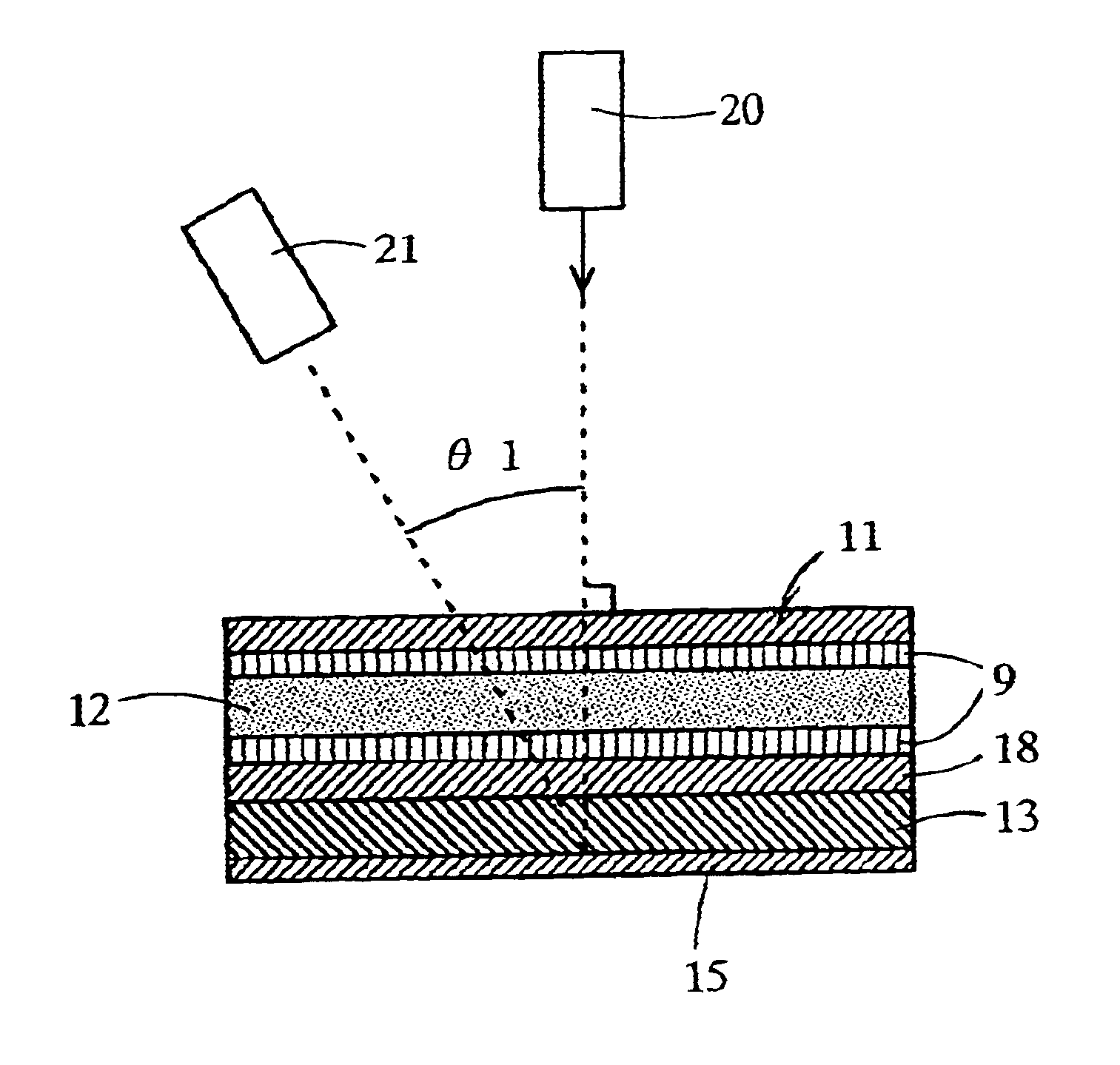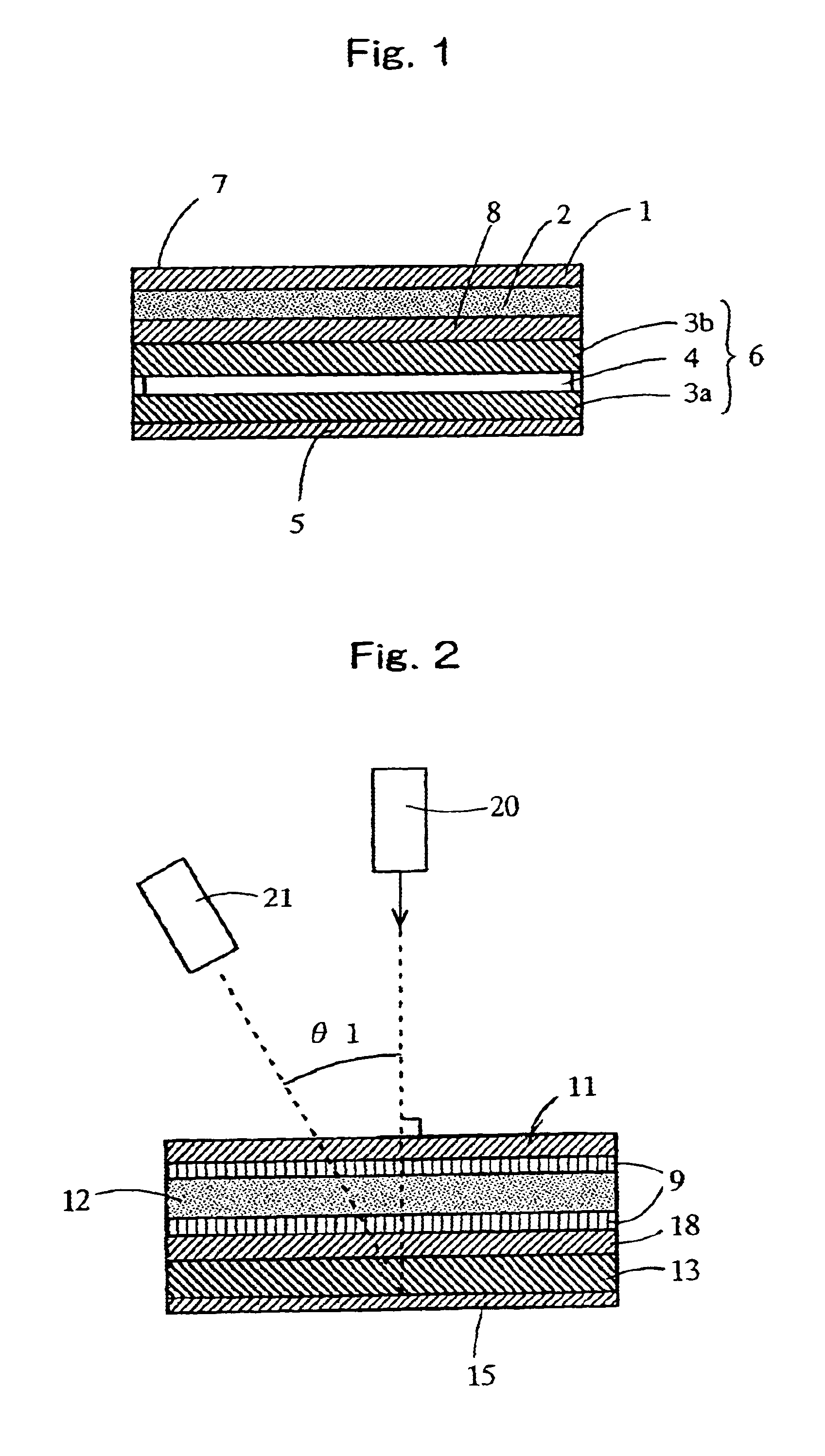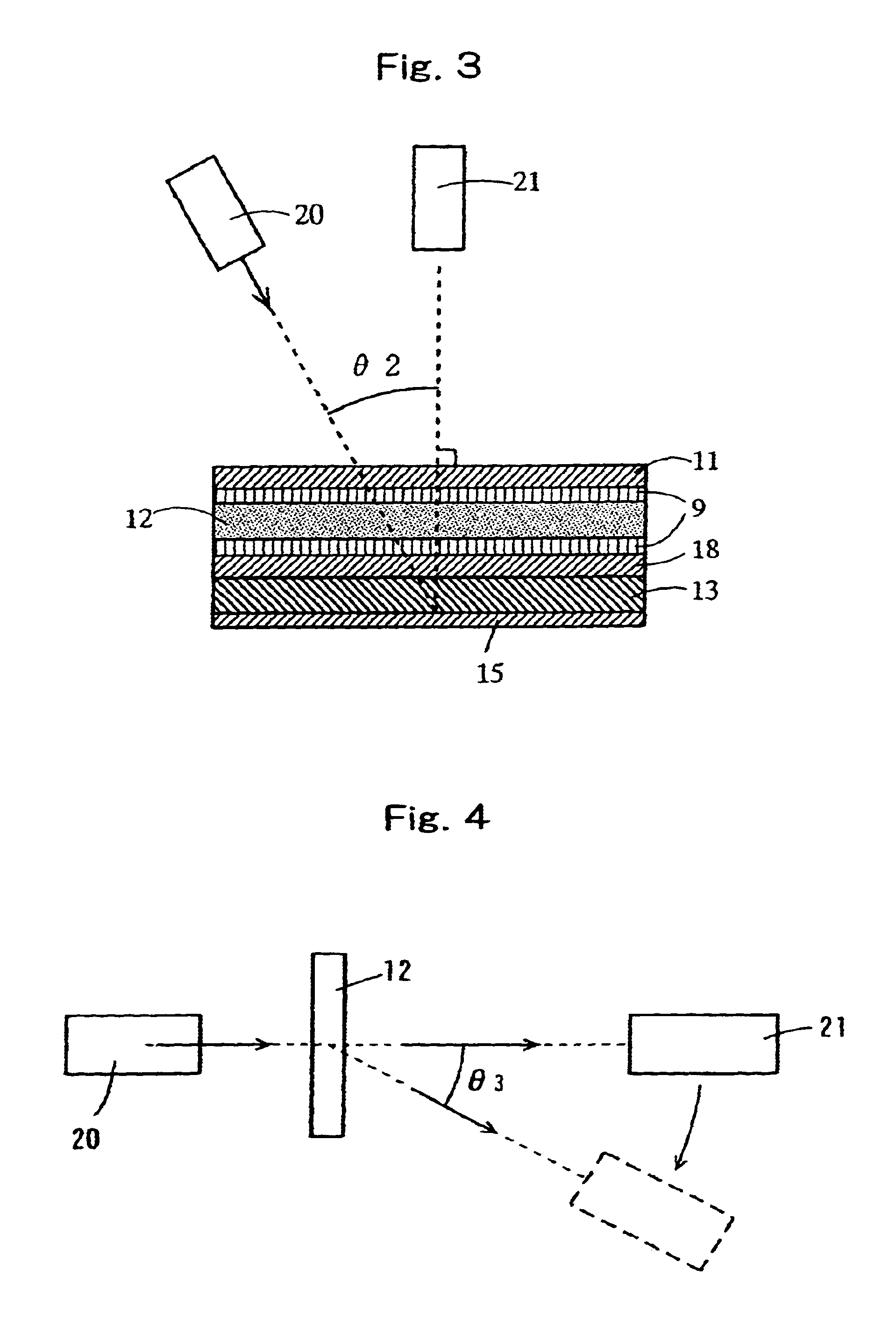Transmission light-scattering layer sheet and liquid crystal display
a technology of liquid crystal display and light-scattering layer, which is applied in the direction of optics, instruments, static indicating devices, etc., can solve the problems of increasing the proportion of loss of reflected light, increasing production costs, and high cost, and achieves bright display, high directionality, and high illumination
- Summary
- Abstract
- Description
- Claims
- Application Information
AI Technical Summary
Benefits of technology
Problems solved by technology
Method used
Image
Examples
example 1
Cellulose acetate (3 parts by weight) (acetylation degree:55.0%, polymerization degree:300, manufactured by Daicel Chemical Industries, Ltd., HDP) and 3 parts by weight of polymethyl methacrylate (PMMA, manufactured by Mitsubishi Rayon Co. Ltd., BR-80) were dissolved in 94 parts by weight of acetone. The solution was cast on a glass plate with the use of wire bar #40, and the plate was allowed to stand in an oven at a temperature of 30.degree. C. for 3 minutes, and then acetone was evaporated to form a sheet layer having thickness of 5 .mu.m on the glass plate. The sheet was peeled from the glass plate. When the sheet was observed with a transmission optical microscope, the sheet was found to have a regular droplet phase structure.
When images of the transmission optical microscope photograph was analyzed with the use of "Image Analyzer V10" (manufactured by Toyo Boseki Co. Ltd.) to measure average diameter of droplets and average distance (average interphase distance) between center...
example 2
Cellulose acetate (3 parts by weight) (acetylation degree:55.0%, polymerization degree:300, manufactured by Daicel Chemical Industries, Ltd., HDP) and 3 parts by weight of polymethyl methacrylate (PMMA, manufactured by Mitsubishi Rayon Co. Ltd., BR-80) were dissolved in 94 parts by weight of acetone. As a transparent support, a coated film in which the surface of triacetylcellulose film (thickness:50 .mu.m) was coated with polyvinyl alcohol (manufactured by Kurare Co. Ltd., alkyl-modified PVA MP203, saponification degree:88%) was used. The solution was cast on the coated-side of the triacetylcellulose film, and the cast film was allowed to stand in an oven at a temperature of 20.degree. C. for 3 minutes, and then acetone was evaporated to form a coating layer (light-scattering layer) having thickness of 3 .mu.m. When the light-scattering layer was observed with a transmission optical microscope, the sheet was found to have a regular droplet phase structure, the average interphase di...
example 3
Cellulose acetate (3 parts by weight)(acetylation degree:54.6%, polymerization degree:180, manufactured by Daicel Chemical Industries, Ltd., VFY) and 4 parts by weight of polymethyl methacrylate (PMMA, manufactured by Mitsubishi Rayon Co. Ltd., BR-80) were dissolved in 93 parts by weight of acetone. As a transparent support, a coated film in which the surface of triacetylcellulose film (thickness:50 .mu.m) was coated with polyvinyl alcohol (manufactured by Kurare Co. Ltd., alkyl-modified PVA MP203, saponification degree:88%) was used. The solution was cast on the coated-side of the triacetylcellulose film, and the cast film was allowed to stand in an oven at a temperature of 20.degree. C. for 3 minutes, and then acetone was evaporated to form a coat layer (light-scattering layer) having thickness of 2 .mu.m. When the light-scattering layer was observed with a transmission optical microscope, the sheet was found to have a regular droplet phase structure, the average interphase distan...
PUM
| Property | Measurement | Unit |
|---|---|---|
| diameter | aaaaa | aaaaa |
| distance | aaaaa | aaaaa |
| angle | aaaaa | aaaaa |
Abstract
Description
Claims
Application Information
 Login to View More
Login to View More - R&D
- Intellectual Property
- Life Sciences
- Materials
- Tech Scout
- Unparalleled Data Quality
- Higher Quality Content
- 60% Fewer Hallucinations
Browse by: Latest US Patents, China's latest patents, Technical Efficacy Thesaurus, Application Domain, Technology Topic, Popular Technical Reports.
© 2025 PatSnap. All rights reserved.Legal|Privacy policy|Modern Slavery Act Transparency Statement|Sitemap|About US| Contact US: help@patsnap.com



